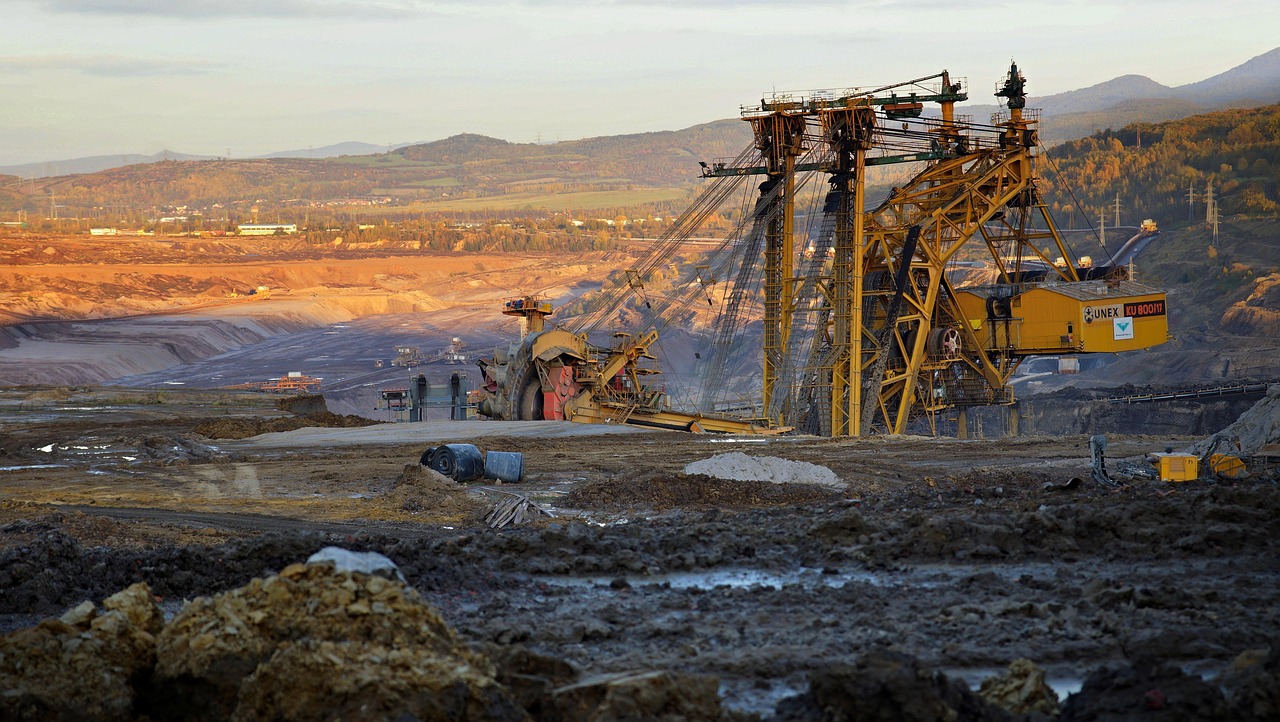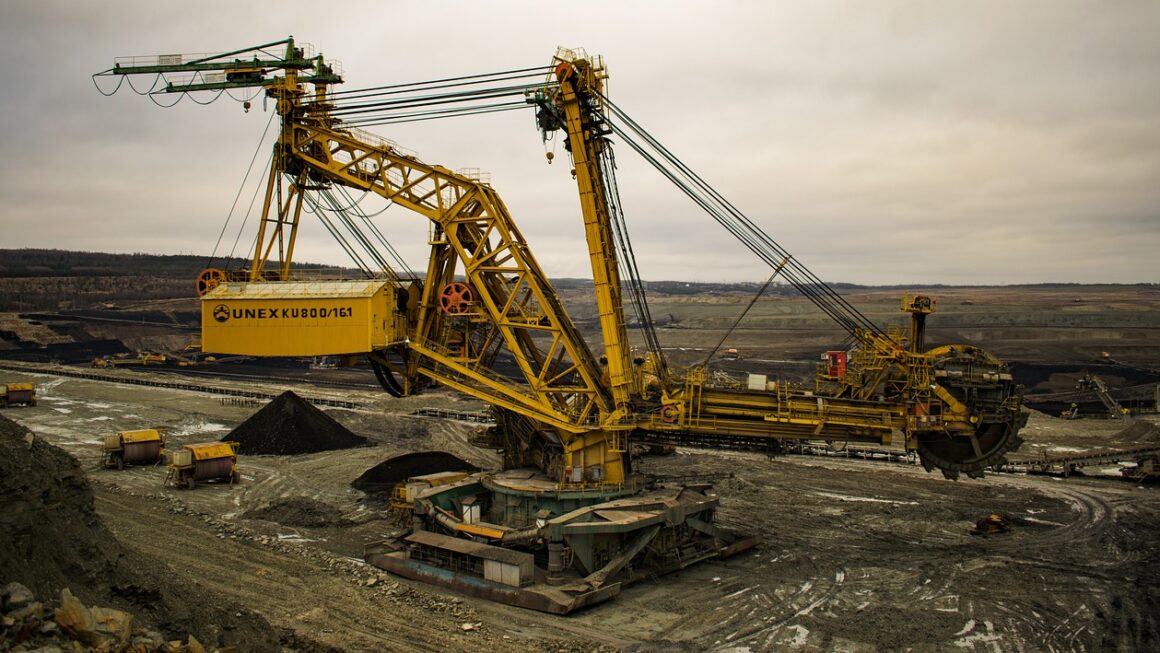Mining, a cornerstone of civilization, is far more than just digging holes in the ground. It’s a complex process involving exploration, extraction, and processing of valuable minerals and geological materials from the earth. These resources are essential for countless industries, from construction and manufacturing to technology and energy production. Understanding the intricacies of mining is crucial for appreciating its impact on our world and the ongoing efforts to make it more sustainable and efficient.
The Significance of Mining
Mining provides the raw materials that underpin modern society. Without it, we wouldn’t have the metals needed for buildings, cars, electronics, or even the energy resources that power our homes and businesses.
Essential Resources for Modern Life
- Metals: Iron ore for steel, copper for wiring, aluminum for transportation, and precious metals like gold and silver for electronics and jewelry.
- Energy Minerals: Coal for power generation, uranium for nuclear energy, and raw materials for renewable energy technologies like lithium for batteries.
- Industrial Minerals: Phosphate for fertilizers, limestone for cement, and various minerals used in manufacturing processes.
- Rare Earth Elements: Critical for high-tech applications, including smartphones, electric vehicles, and defense technologies.
Economic Impact and Job Creation
The mining industry is a major economic driver in many regions, providing employment opportunities and generating substantial revenue.
- Job Creation: Mining operations employ geologists, engineers, heavy equipment operators, and many other skilled workers.
- Economic Contribution: Mining companies pay taxes and royalties, contributing to government revenue and supporting local economies.
- Supply Chain Benefits: The mining industry supports a vast supply chain, including manufacturers of mining equipment, transportation companies, and service providers.
- Example: In Australia, the mining industry accounts for a significant portion of the country’s GDP and is a major source of export revenue.
Types of Mining Methods
The selection of a suitable mining method depends on factors such as the geology of the ore deposit, its depth, and the surrounding environmental considerations.
Surface Mining
Surface mining involves extracting minerals from the earth’s surface. This method is typically used when the ore deposit is located close to the surface.
- Open-Pit Mining: Used for large, near-surface ore deposits, creating a large, bowl-shaped excavation.
Example: The Bingham Canyon Mine in Utah is one of the largest open-pit mines in the world, extracting copper, gold, and other minerals.
- Strip Mining: Used for extracting minerals from shallow, horizontal deposits, such as coal seams.
Example: Often used in coal mining regions in the United States, where layers of overburden are removed to access the coal beneath.
- Quarrying: Used for extracting building materials like limestone, granite, and marble.
Example: Carrara, Italy, is famous for its marble quarries that have been supplying high-quality marble for centuries.
Underground Mining
Underground mining involves extracting minerals from beneath the earth’s surface through tunnels and shafts. This method is used when the ore deposit is located deep underground.
- Shaft Mining: Involves sinking a vertical shaft to access the ore deposit.
Example: Used in deep gold mines in South Africa, where shafts can extend several kilometers below the surface.
- Drift Mining: Involves driving horizontal tunnels (drifts) into the side of a hill or mountain to access the ore deposit.
Example: Used in mountainous regions where ore deposits are exposed on hillsides.
- Longwall Mining: A highly mechanized method used for extracting coal seams, involving the use of a cutting machine that moves along the coal face.
Example: Used in many large-scale coal mines worldwide, offering high production rates.
In-Situ Leaching (ISL)
ISL involves dissolving minerals in place underground and then pumping the solution to the surface for processing. This method is used for certain types of uranium and copper deposits.
- Process: A leaching solution is injected into the ore deposit to dissolve the valuable minerals. The solution is then pumped to the surface, where the minerals are recovered.
- Environmental Considerations: ISL can have environmental benefits compared to traditional mining methods, as it minimizes surface disturbance and waste generation.
- Example: ISL is used in several uranium mines in Kazakhstan and the United States.
Mining and the Environment
Mining activities can have significant environmental impacts, including habitat destruction, water pollution, and air pollution. Sustainable mining practices are essential for minimizing these impacts and ensuring responsible resource extraction.
Environmental Impacts
- Habitat Destruction: Mining can lead to the loss of natural habitats, affecting biodiversity and ecosystem services.
- Water Pollution: Mining activities can contaminate water sources with heavy metals and other pollutants.
- Air Pollution: Dust and emissions from mining operations can contribute to air pollution and respiratory problems.
- Land Degradation: Surface mining can alter the landscape and create long-term land degradation.
Sustainable Mining Practices
- Environmental Impact Assessments (EIAs): Conducting thorough EIAs before starting mining operations to identify and mitigate potential environmental impacts.
- Rehabilitation and Reclamation: Restoring mined lands to a productive state after mining operations have ceased.
- Water Management: Implementing water management strategies to minimize water consumption and prevent water pollution.
- Waste Management: Properly managing mining waste to prevent environmental contamination.
- Community Engagement: Engaging with local communities to address their concerns and ensure that mining operations benefit the local population.
- Example: Companies are now using closed-loop water systems in mines to recycle water and minimize the discharge of pollutants into the environment.
Technological Advancements in Sustainable Mining
- Autonomous Vehicles and Equipment: Reduces fuel consumption and increases efficiency, leading to lower emissions.
- Advanced Sensors and Monitoring Systems: Enables real-time monitoring of environmental conditions and helps prevent pollution incidents.
- Digital Twins: Simulates mining operations, enabling better planning and optimization to reduce environmental impacts.
The Future of Mining
The mining industry is evolving rapidly, driven by technological advancements and increasing demand for sustainable practices.
Technological Innovations
- Automation and Robotics: Automating mining processes with robots and drones to improve efficiency and safety.
- Data Analytics and AI: Using data analytics and artificial intelligence to optimize mining operations and improve resource recovery.
- 3D Printing: Using 3D printing to create custom mining equipment and parts on-site.
- Blockchain Technology: Improving transparency and traceability in the mining supply chain with blockchain technology.
The Circular Economy and Mining
- Recycling and Reuse: Recovering valuable metals and minerals from electronic waste and other sources to reduce the need for primary mining.
- Urban Mining: Extracting valuable materials from urban waste streams, such as construction debris and demolition waste.
- Extending Product Lifecycles: Designing products that are durable and repairable to reduce the demand for new materials.
Ethical and Social Considerations
- Fair Labor Practices: Ensuring fair wages and safe working conditions for miners.
- Community Development: Investing in local communities and supporting sustainable development initiatives.
- Transparency and Accountability: Promoting transparency in mining operations and holding companies accountable for their environmental and social performance.
- Example:* The increased demand for electric vehicles is driving the need for lithium and other battery minerals, leading to new mining projects and advancements in extraction technologies.
Conclusion
Mining plays a vital role in modern society, providing the raw materials necessary for our everyday lives. Understanding the different mining methods, environmental impacts, and sustainable practices is crucial for ensuring responsible resource extraction. By embracing technological innovations and promoting ethical and social considerations, the mining industry can contribute to a more sustainable and prosperous future.




